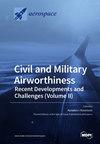受周期性入流扰动的低压涡轮级联内壁流的特征描述,第 1 部分:利用锁相粒子图像测速仪进行流场研究
IF 2.1
3区 工程技术
Q2 ENGINEERING, AEROSPACE
引用次数: 1
摘要
在发动机相关的高速和低 Re 条件下运行的低压涡轮级联内进行了粒子图像测速(PIV)测量,以研究近内壁流动。特别值得研究的是由运动的圆柱形杆以 500 Hz 的频率产生的入射湍流对流场的主要周期性干扰。利用两种 PIV 设置来解决以下两个问题:(1) 靠近内壁和中跨的大叶片对叶片平面;(2) 叶片通道下游轴向流场中的唤醒效应。测量采用了锁相方法,以便将测量结果与该测试案例的综合 CFD 数据进行比对。实验结果不仅有助于更好地理解甚至量化叶片通道内部和下游的尾流引起的过转/欠转,还可以追踪 "负喷流效应",这种效应在透平机械领域的 CFD 分支中广为人知,但在实验中却很少被直观地表现出来。结果还显示,条状尾流周期性地将叶片尾流扩大了 165%,而二次流受到的影响较小,并且与二维流效应相比表现出相滞后。本文所展示的结果是本两部分出版物第二部分中使用非稳定压敏涂料对近内壁叶片吸力面效应进行后续研究的重要基础。本文章由计算机程序翻译,如有差异,请以英文原文为准。
Characterization of the Endwall Flow in a Low-Pressure Turbine Cascade Perturbed by Periodically Incoming Wakes, Part 1: Flow Field Investigations with Phase-Locked Particle Image Velocimetry
Particle image velocimetry (PIV) measurements were performed inside a low-pressure turbine cascade operating at engine-relevant high-speed and low-Re conditions to investigate the near-endwall flow. Of particular research interest was the dominant periodic disturbance of the flow field by incoming wakes, which were generated by moving cylindrical bars at a frequency of 500 Hz. Two PIV setups were utilized to resolve both (1) a large blade-to-blade plane close to the endwall as well as midspan and (2) the wake effects in an axial flow field downstream of the blade passage. The measurements were performed using a phase-locked approach in order to align and compare the results with comprehensive CFD data that are also available for this test case. The experimental results not only support a better understanding and even a quantification of the wake-induced over/under-turning inside and downstream of the passage, they also enable the tracing of the `negative-jet-effect’, which is widely known in the CFD branch of the turbomachinery community but is seldom visualized in experiments. The results also reveal that the bar wake periodically widens the blade wake by up to 165%, while the secondary flow is less affected and exhibits a phase lag with respect to the 2D-flow effects. The results presented here are an essential basis for the subsequent investigation of the near-endwall blade suction surface effects using unsteady pressure-sensitive paint in the second part of this two-part publication.
求助全文
通过发布文献求助,成功后即可免费获取论文全文。
去求助
来源期刊

Aerospace
ENGINEERING, AEROSPACE-
CiteScore
3.40
自引率
23.10%
发文量
661
审稿时长
6 weeks
期刊介绍:
Aerospace is a multidisciplinary science inviting submissions on, but not limited to, the following subject areas: aerodynamics computational fluid dynamics fluid-structure interaction flight mechanics plasmas research instrumentation test facilities environment material science structural analysis thermophysics and heat transfer thermal-structure interaction aeroacoustics optics electromagnetism and radar propulsion power generation and conversion fuels and propellants combustion multidisciplinary design optimization software engineering data analysis signal and image processing artificial intelligence aerospace vehicles'' operation, control and maintenance risk and reliability human factors human-automation interaction airline operations and management air traffic management airport design meteorology space exploration multi-physics interaction.
 求助内容:
求助内容: 应助结果提醒方式:
应助结果提醒方式:


